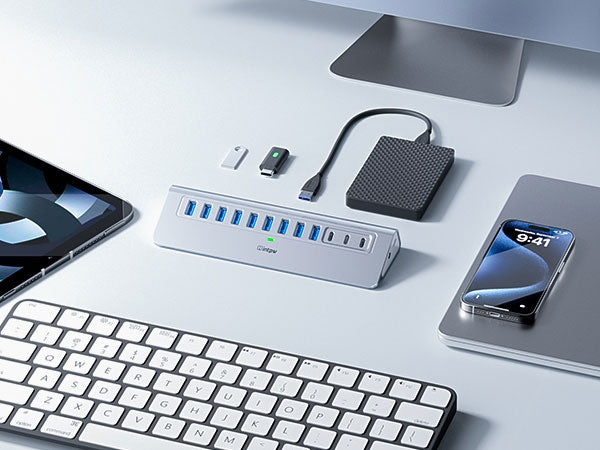
Thunderbolt to HDMI: When Pixels Meet Power
, by USintpw, 2 min reading time

, by USintpw, 2 min reading time
Picture this: You’ve spent $2,000 on a 4K OLED monitor, only to see "No Signal" blinking like a bad omen. Thunderbolt to HDMI promises seamless connectivity, but the devil’s in the details. Let’s turn frustration into fluency.
Thunderbolt’s DNA
Thunderbolt isn’t just a port—it’s a Swiss Army knife for data. Born from Intel-Apple collabs, Thunderbolt 4 pumps 40Gbps bandwidth while juggling data, 8K video, and 100W charging through a single USB-C port. Its secret sauce? DisplayPort Alt Mode that converts signals to HDMI without breaking a sweat.
HDMI 2.1 dominates living rooms and studios with 48Gbps bandwidth, 8K@60Hz, and eARC for Dolby Atmos. But here’s the rub: Thunderbolt speaks DisplayPort natively, requiring adapters to "translate" HDMI’s language.
Pro Tip: Need HDR? Ensure your adapter supports HDMI 2.1’s Dynamic HDR—cheap dongles often strip metadata like Netflix’s 4K DRM.
Passive USB-C to HDMI adapters work for 1080p, but 4K@60Hz demands active conversion. These contain chips that decode Thunderbolt’s DisplayPort signals into HDMI—think of them as bilingual diplomats for your pixels.
A Thunderbolt dock with HDMI isn’t just a cable—it’s a command center. Look for:
➡️Dual 4K@60Hz support (HDMI 2.0 minimum)
➡️100W PD to juice your MacBook Pro
➡️USB 3.2 hubs for peripherals
Red Flag Alert: Unpowered docks may choke on 4K+HDR combos. Always verify external power supply for pro workflows.
Gamers, beware: Many adapters cap HDMI 2.1’s 120Hz to 60Hz. For buttery-smooth Elden Ring sessions, hunt for VRR (Variable Refresh Rate) compatibility.
Video editors using DaVinci Resolve need 10-bit color depth. Cheap adapters often downgrade to 8-bit, making skin tones look like Minecraft blocks. Solution? Thunderbolt docks with HDMI 2.1’s 12-bit pipeline.
Thunderbolt 5 (2025) doubles bandwidth to 80Gbps, enabling dual 8K@120Hz—perfect for Apple’s rumored XDR Pro displays. Pair it with HDMI 2.1a’s Source-Based Tone Mapping, and your HDR movies will pop like IMAX.
Not all USB-C cables are Thunderbolt! Look for:
➡️40Gbps certification logos
➡️EMARK chips in HDMI 2.1 cables
➡️3-meter max length for 8K stability
If your monitor stays dark:
➡️Check HDCP 2.3 compliance (Netflix/Disney+ require it)
➡️Downgrade to 4K@30Hz as a test
➡️Update macOS/Win11 GPU drivers
Right-click your speaker icon → Sound Settings → Set HDMI as default. Still mute? Your adapter might lack audio extractor circuits—common in no-name brands.

Subscribe to our emails